Our Next Program:
A Tale of Two Subways, presented by David Sadowski and Ray DeGroote
For our February program, CERA travels to both Rochester, New York, and Newark, New Jersey– two cities that built subways in old canal beds, with very much different results. The Rochester Subwayopened in 1927, struggled to find its proper role, and was never used to full potential, except perhaps during WWII. It closed in 1956 and was partially replaced by an expressway.
In contrast, the Newark City Subway, opened in 1935, was an immediate and lasting success. PCC cars ran in Newark from 1954 to 2001 and became closely identified with the service. Light rail extensions to the subway opened in 2002 and 2006.
We will cover the history of both subways using both video and still images from a variety of sources. As a bonus feature, we will show rare shots of Cincinnati’s unfinished 1920s subway, which was also built in a former canal bed. Come join us for what promises to be a fun evening.
Friday, February 28, 2014
1900 hrs / 7:00pm
University Center
525 S. State Street
Chicago, Illinois
Admission is free for current CERA members. There will be a $5.00 Admission charge for non-members.
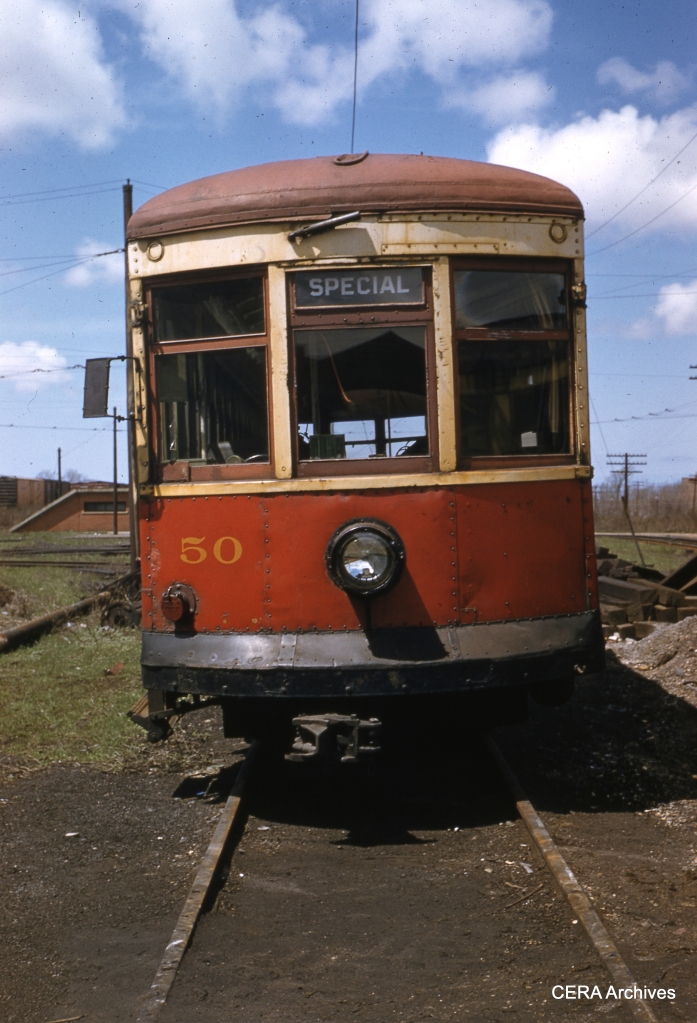
RTC 50 in April 30, 1956. (Photographer unknown – CERA Archives)
Today, we feature images from the Rochester subway. These are rare, as railfans do not seem to have paid much attention to this operation until just prior to abandonment in 1956. In addition to these images, and a documentary film we will be showing, we are grateful to have the participation of two local photographers (Ray DeGroote and Paul Mayer) who visited Rochester in the 1950s and took pictures of the subway.
At the same time Rochester decided to shut down their subway, Toronto was building theirs.

RTC 630 at East Main Station on January 12, 1934. (Photographer unknown – CERA Archives)
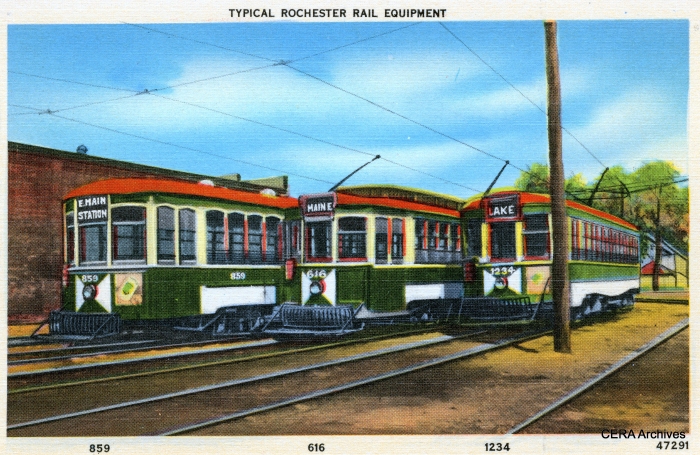
Rochester subway equipment, built between 1906 and 1916, from an old postcard. (CERA Archives)
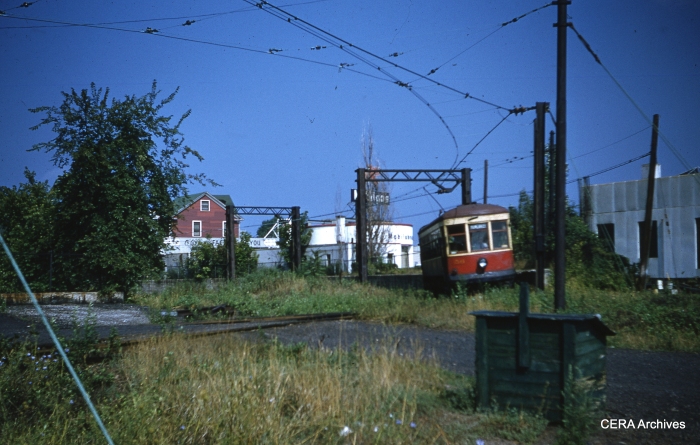
RTC 56 rounds a curve. (Photographer unknown – CERA Archives)
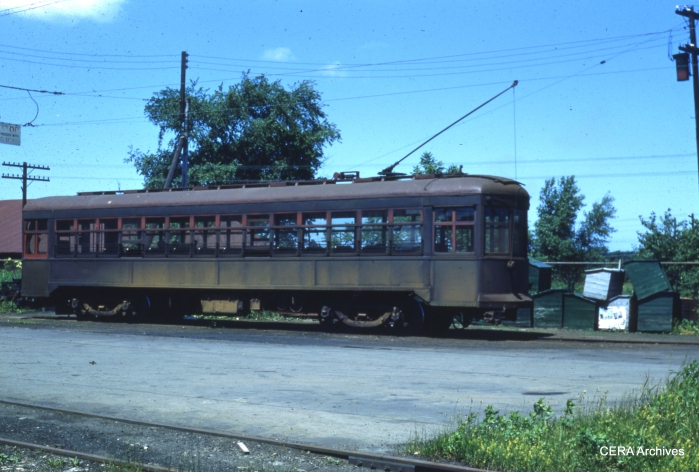
RTC 63 (ex-New York railways), looking rather shabby in the waning days of the Rochester subway. (Photographer unknown – CERA Archives)
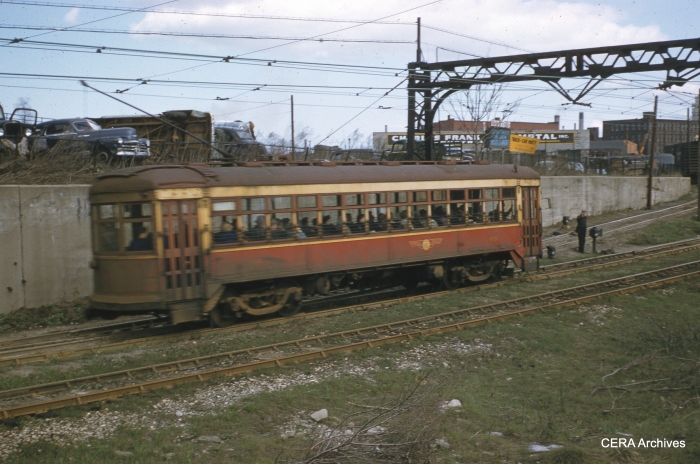
RTC 68 at speed on April 30, 1956. (Photographer unknown – CERA Archives)
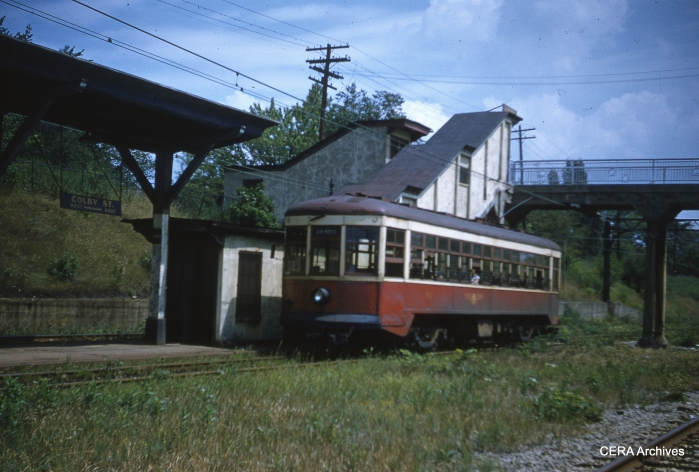
RTC 52 at Colby Street in April 1956. (Photographer unknown – CERA Archives)
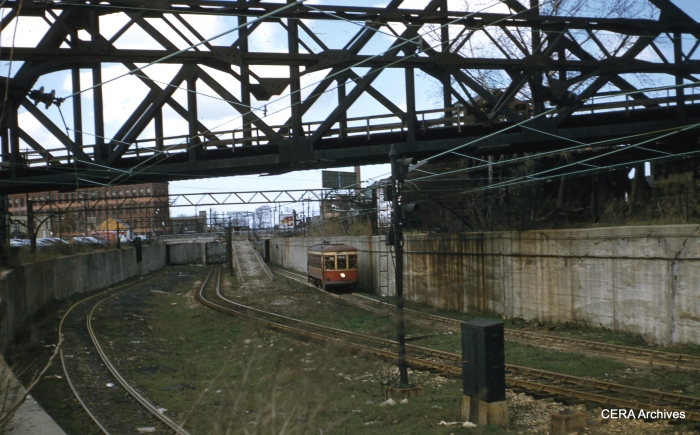
RTC 68 on April 30, 1956. (Photographer unknown – CERA Archives)
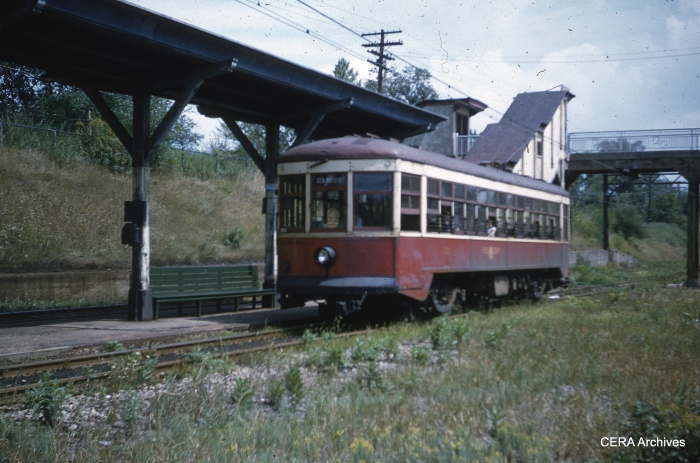
RTC 52 at Colby Street. (R. M. Buckley Photo – CERA Archives)
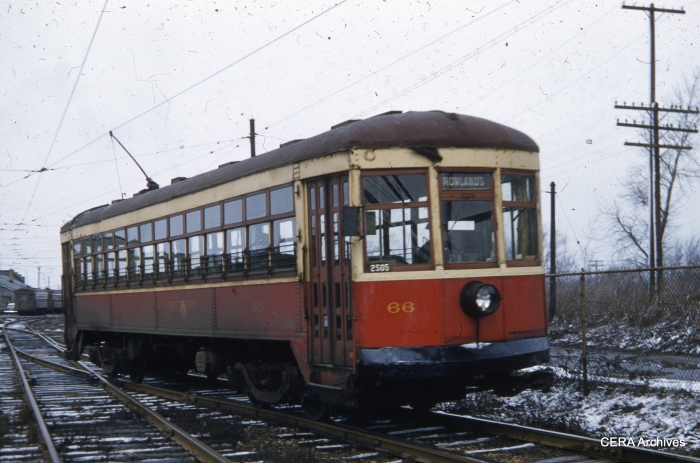
RTC 66 on March 30, 1956. (Photographer unknown – CERA Archives)
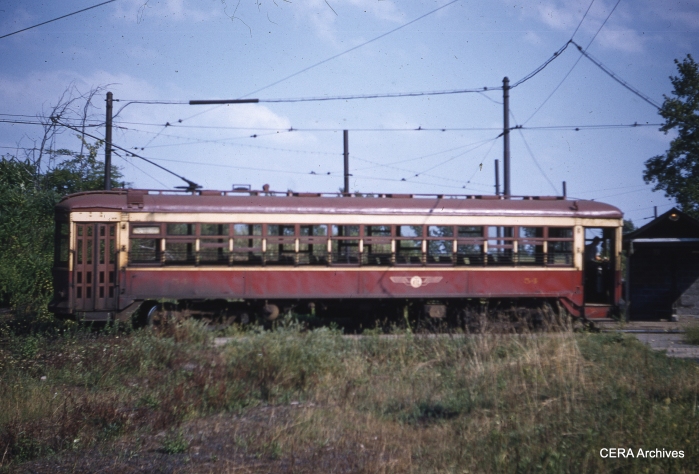
RTC 54 in 1956. (Photographer unknown – CERA Archives)
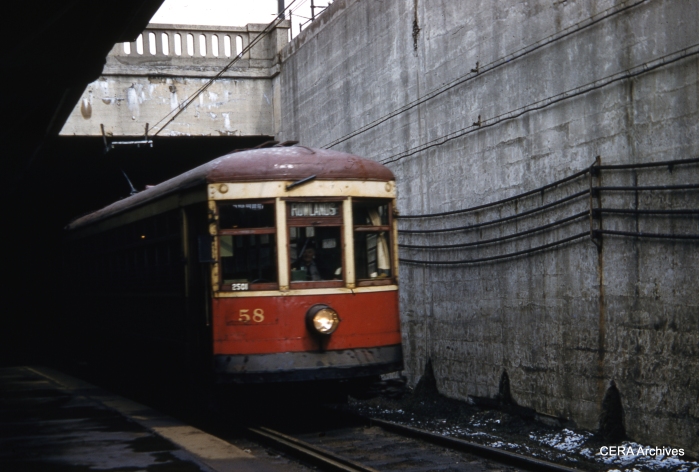
RTC 58 emerges from the subway on March 30, 1956. (Photographer unknown – CERA Archives)
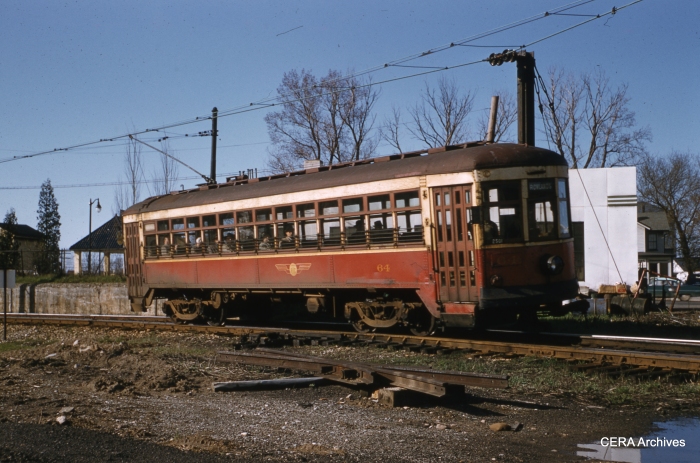
RTC 64 on April 30, 1956. (Photographer unknown – CERA Archives)
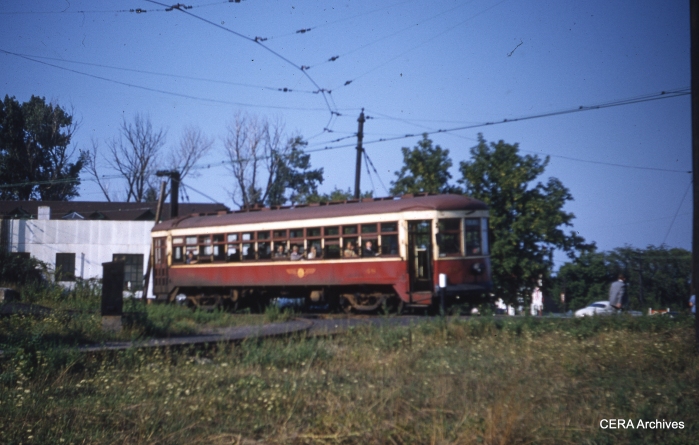
RTC 48 in 1956. (Photographer unknown – CERA Archives)
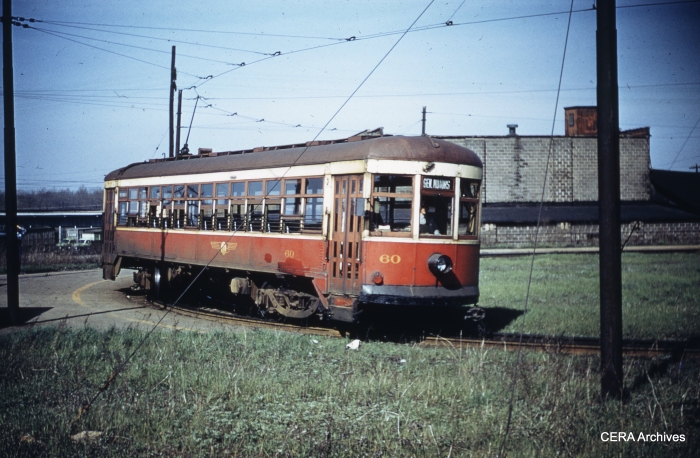
RTC 60, the only car saved, on May 12, 1956. (Photographer unknown – CERA Archives)
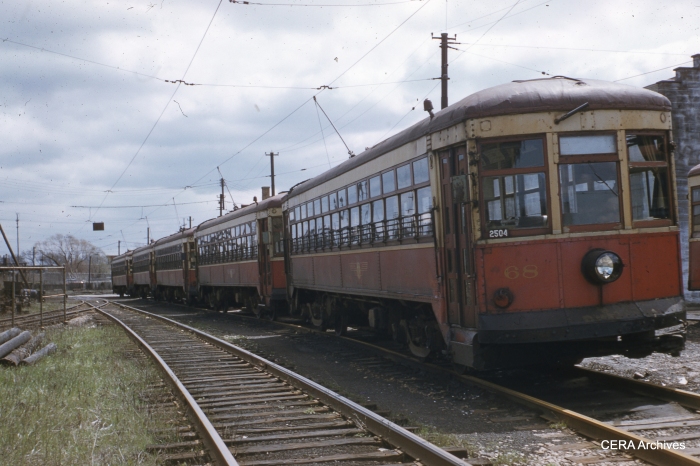
RTC 68 lined up with other cars on April 30, 1956. (Photographer unknown – CERA Archives)
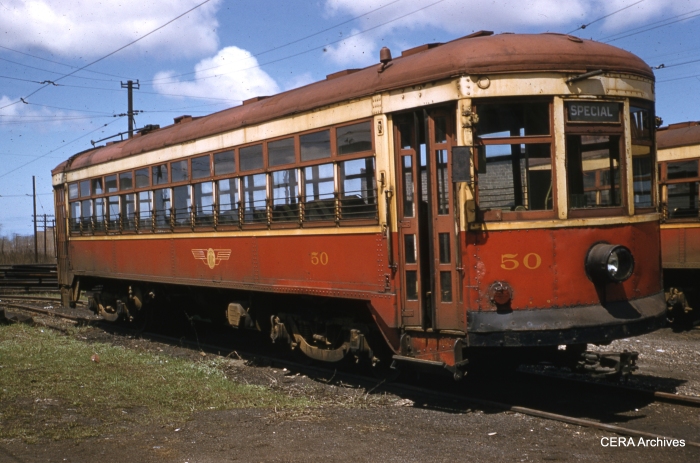
RTC 50 on April 30, 1956. (Photographer unknown – CERA Archives)
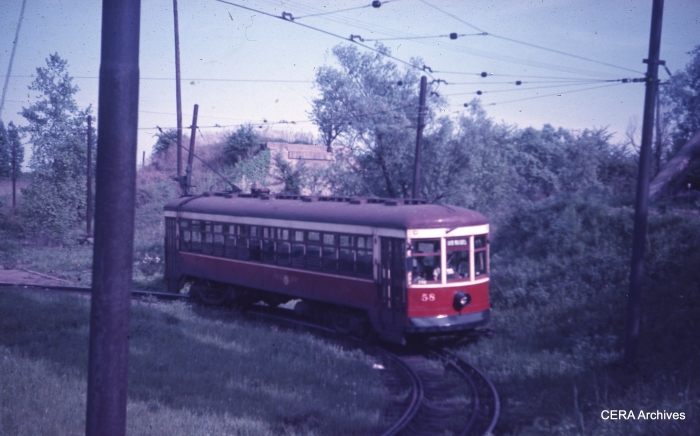
RTC 58 on a turnback loop. (Photographer unknown – CERA Archives)
Rochester is well-known to railfans as the headquarters of the Eastman Kodak Company, a dominant institution in American life for more than 100 years. Kodak invented Kodachrome, the first practical color slide film, in 1935. I knew many railfan photographers who wouldn’t shoot anything else years ago.
As late as 1976, Kodak had a 90% share of the film market, and 85% of the camera market. This success unfortunately led to a kind of corporate complacency at Kodak.
Kodak invented digital photography, but failed to make a successful transition from film to digital in the 1990s and early 2000s. Likewise, Rochester one had a successful rapid transit line, but failed to make the kind of successful transition to “light rail” that Newark has done.
Kodak’s lack of foresight resulted in the company declaring bankruptcy in 2012. After selling off many valuable assets, including patents, Kodak emerged from bankruptcy in 2013 and faces an uncertain future. Due to steadily declining sales, Kodak discontinued the manufacture of Kodachrome slide film in 2009. The last roll was developed in 2010.
Most of the images in this post were originally shot on Kodachrome film manufactured by Kodak in Rochester, New York.
The Carousel slide projector is another Kodak product loved by railfans. You can watch the famous Kodak Carousel scene from season 1, episode 13 of Mad Men (“The Wheel”) here. This first aired on October 18, 2007.
Don Draper:
Well, technology is a glittering lure. But there’s the rare occasion when the public can be engaged on a level beyond flash, if they have a sentimental bond with the product. My first job, I was in-house at a fur company, with this old pro copywriter. Greek, named Teddy. And Teddy told me the most important idea in advertising is “new”. Creates an itch. You simply put your product in there as a kind of… calamine lotion. But he also talked about a deeper bond with the product: nostalgia. It’s delicate… but potent. Teddy told me that in Greek, “nostalgia” literally means, “the pain from an old wound”. It’s a twinge in your heart, far more powerful than memory alone. This device isn’t a spaceship. It’s a time machine. It goes backwards, forwards. It takes us to a place where we ache to go again. It’s not called the Wheel. It’s called a Carousel. It lets us travel the way a child travels. Around and around, and back home again… to a place where we know we are loved.
Kodak discontinued making Carousel projectors in 2004.
We will feature the Newark City Subway in tomorrow’s post.
-David Sadowski
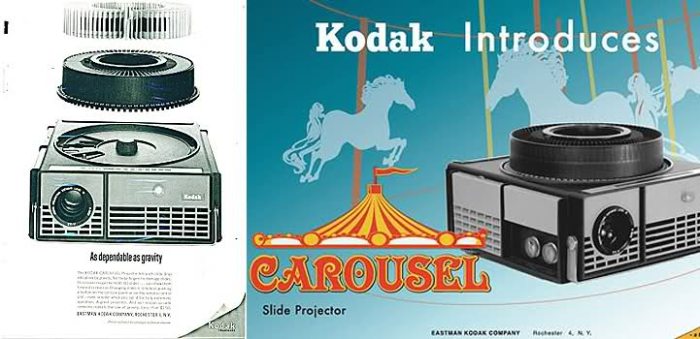
The original Kodak Carousel from 1962.

Don Draper makes his pitch to Kodak in a 2007 episode of “Mad Men.”
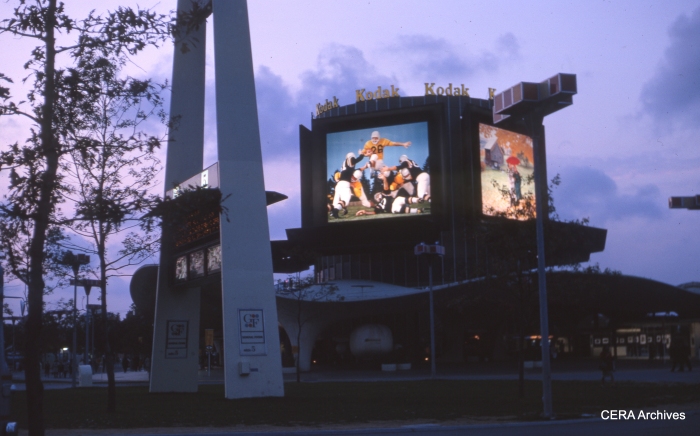
The Kodak Pavilion at the New York World’s Fair, as it appeared in October 1964. (Photographer unknown – CERA Archives)